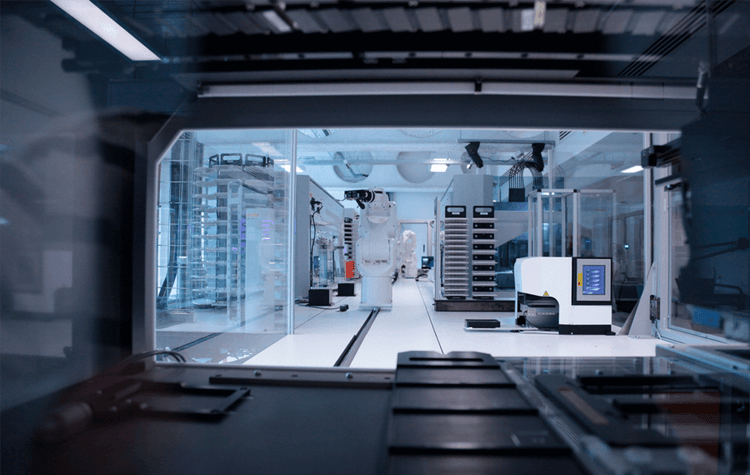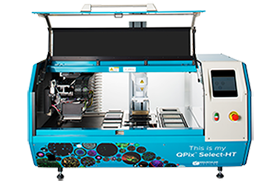
University of Edinburgh uses QPix colony pickers to scale up DNA manufacturing
COMPANY/UNIVERSITY
The Edinburgh Genome Foundry, University of Edinburgh’s Centre for Synthetic and Systems Biology
TEAM MEMBERS
Dr Rennos Fragkoudis, Edinburgh Genome Foundry Facility Manager
PRODUCTS USED
QPix 400 Series Microbial Colony Pickers
The Challenge
The Edinburgh Genome Foundry (EGF) manufactures genetic material for their customers using a fully automated robotic platform, creating and modifying strands of DNA up to one mega base pairs in length. These DNA constructs are used to equip cells or whole organisms with new or improved functionality, such as programming stem cells for use in personalized medicine, producing disease-detecting bacteria, or increasing the yield of biofuel crops.
To achieve higher sample throughput with accurate sample and data tracking, EGF required an automated colony picking system that was also able to plate and streak multiple samples onto automation-compatible SBS format trays. Additionally, this system had to be able to fully integrate into their existing automated workflow. This required hardware and software modifications to allow access to third-party robotic arms for sample handling and delivery to other instruments in the workflow.

The Solution
- Customized QPix hardware and software to address novel workflow
- Designed and manufactured custom picking head

QPix Microbial Colony Pickers
Products Used
The QPix™ 400 series of microbial colony pickers offer you the unique option to simultaneously detect colonies and quantify fluorescent markers in a pre-screening step before picking. Our QPix systems are used worldwide in over 600 installations in research institutes, sequencing facilities, biotech and pharmaceutical companies. QPix robotics developed a famous reputation for reliability and accuracy in sequencing centers during the Human Genome project.
More than just colony pickers, these systems enable scientists to:
- Automate workflows from sampling and spreading to picking
- Pick the right colonies every time
- Efficiently manage large, diverse populations for: protein expression, biofuel research, enzyme evolution, phage display, DNA sequencing, library generation and management
The Results
With the ability to plate up to 200 samples or pick up to 3,000 colonies in one hour, the QPix Select-HT system provides the necessary high-throughput sampling needed for timely delivery of products to their customers. Each process has reliable sample tracking and data management as well, allowing the EGF to manage sample data effectively for the entire automated workflow. Integration of the system into a fully automated workflow also reduces the employee labor hours required to run the system, therefore, reducing the financial costs for each EGF project. The close collaboration between Molecular Devices AWES Team and the Edinburgh Genome Foundry resulted in an effective solution to their specific workflow needs, allowing the EGF to meet their goal of a fully-automated platform for DNA assembly.
Download the full case study (PDF version) >>
See the QPix in action at the Edinburgh Genome Foundry
https://share.vidyard.com/watch/kVYfXTZ2tpo2cTJ3FAazqn
References
Wevers, N.R. et al. High-throughput compound evaluation on 3D networks of neurons and glia in a microfluidic platform. Nature Scientific Reports 6, Article number: 38856 (2016).
Junaida A. et al. An End-User Perspective on Organ-on-a-Chip: Assays and Usability Aspects. Current Opinion in Biomedical Engineering. Article in Press (2017).